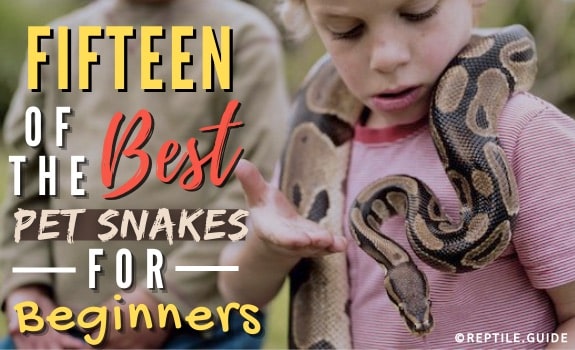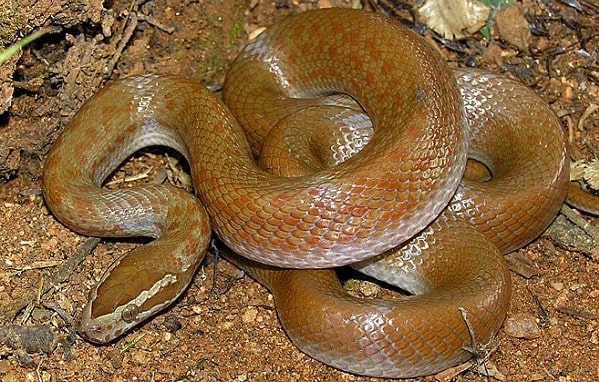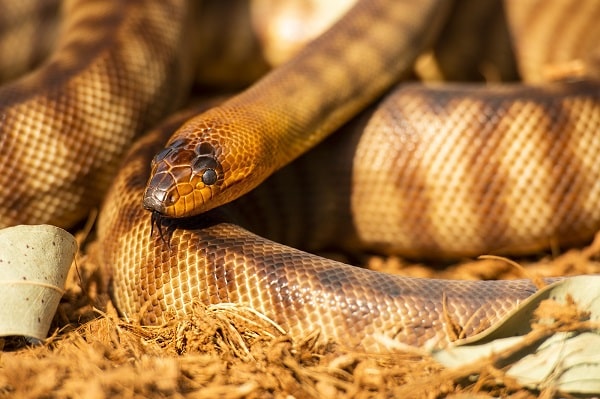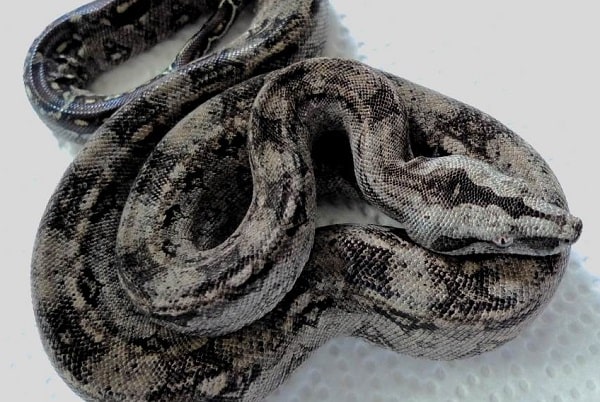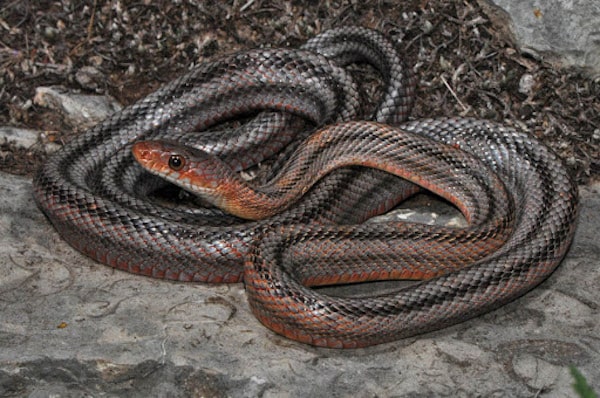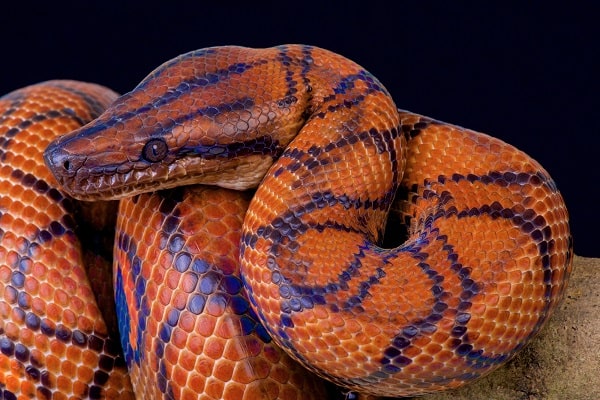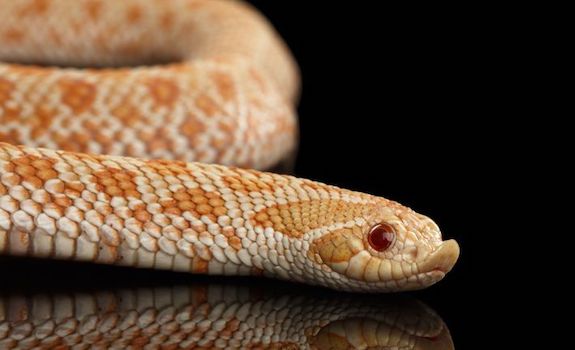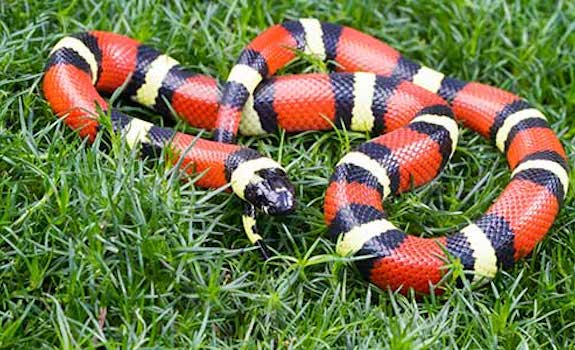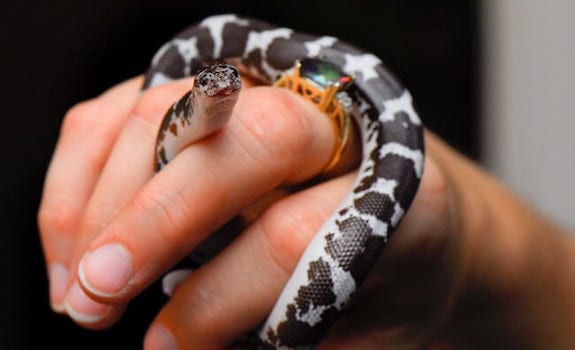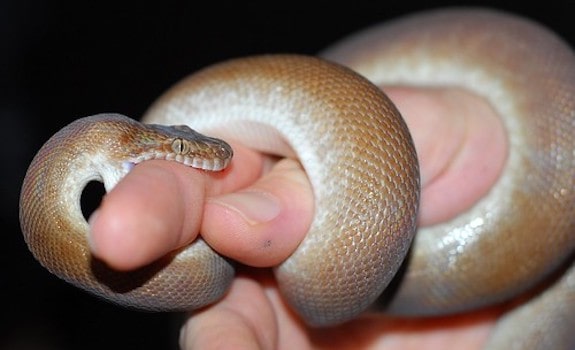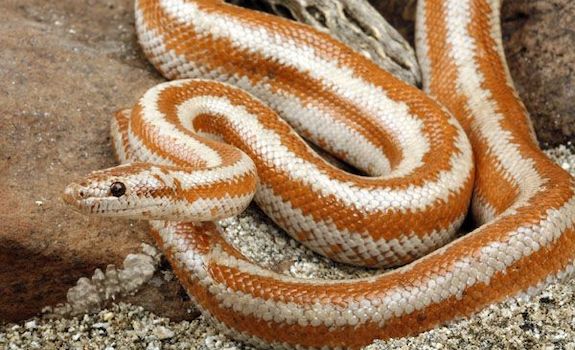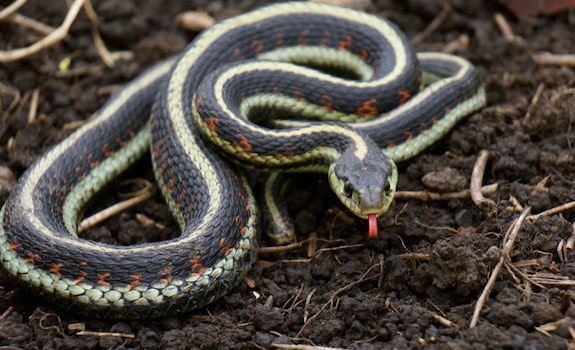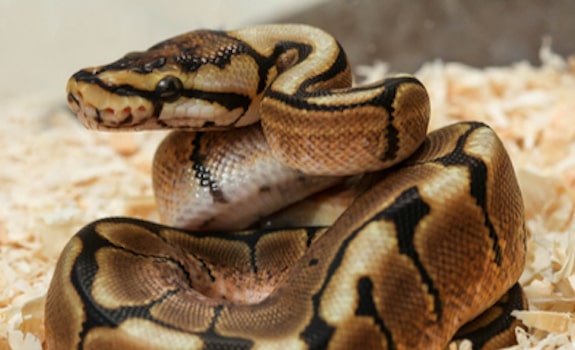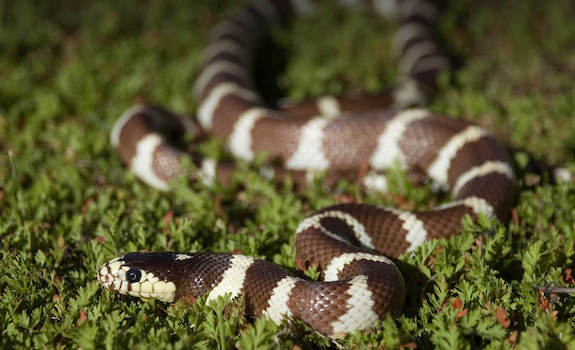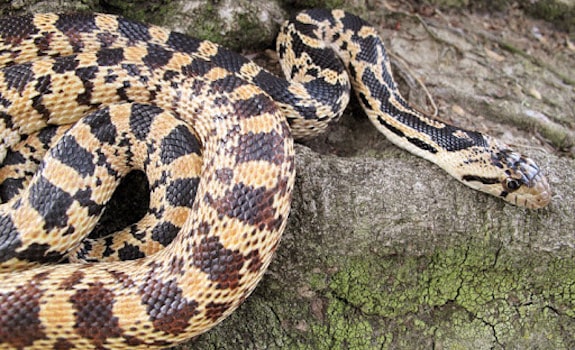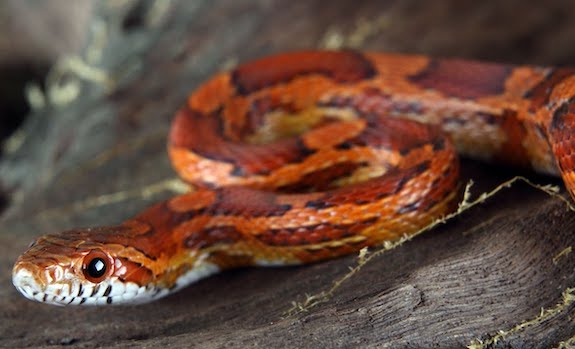The folklore about snakes, or serpents, has been long and enduring. People are seemingly either enthralled by their “sneaky” nature or terrified that they represent something dangerous or sinister.
In fact, mammals are biologically inclined to be wary of snakes in their environment, which explains why SO MUCH mythology has been created about them over the millennia.
Snakes can be represented from evil beings to omens of fertility and rebirth, depending on the origin story. And with this knowledge, it’s easy to understand the fascination people have with snakes and why SO many want to have them as pets!
And when it comes to variety? Well, let’s just say snakes take the cake…
They come in so many variations (around 3,600 species!!!), colors, and sizes.
They are often incredibly powerful and potentially dangerous, OR completely harmless – which is what we want in a housemate.
It’s crucial that a beginner snake owner plans out his or her snake journey so that he not only doesn’t get overwhelmed but is also able to provide the snake has the best home possible.
Still, thinking about adopting a snake? Keep reading to discover the 15 BEST snake species that make wonderful pets for first time snake owners!
In This Article
15. African House Snake
The African House Snake or “Brown House Snake” is a small, under-rated colubrid snake that makes a perfect pet for most beginner reptile keepers!
From temperature, to humidity, to substrate, to enclosure decor, hobbyists have had success keeping this hardy species in such a wide variety of conditions that it’s hard to go wrong.
The general recommendations are similar to most North American colubrids, with a basking temperature of 90°F, an ambient temperature of 72°F to 80°F, and humidity at 40-60%.
African house snakes stay very small, with females rarely growing over 3 feet long. Males are only half that size!
Thanks to their small size, they can live their entire lives in a 20-gallon long aquarium or 24” long plastic tub.
Like most snakes, well cared for housies will live to be about 20 years old.
Once hatchlings have had a few rodent meals, they rarely refuse food for the rest of their lives.
This is an active and curious nocturnal species that tolerates handling well and is fun to observe (if you’re a night owl!)
Perhaps the only downside to African house snakes is that they’re still not common as pets, so you might not be able to find any at the pet store. Instead, head to Google and try to find a reputable breeder.
14. Woma Python
The Woma Python is an Australian species that’s becoming increasingly popular in captivity thanks to its undemanding care requirements, calm demeanor, and manageable size.
These snakes are light yellow or tan with darker brown lateral stripes down their whole body, making them look a lot like a tiger!
Woma Pythons rarely grow over 6 feet, but they usually stay around 4 to 5 feet, making them the perfect size for anyone new to handling snakes.
An adult Woma Python needs an enclosure at least 3 feet long, like a 40-gallon aquarium. They’re active and enjoy lots of space and decorations to explore.
In the wild, woma pythons occupy arid red sand deserts. They’ll appreciate moderate humidity around 50-70%, a water dish, substrate to burrow in, and rocky caves and crevices to hide under.
Offer a basking temperature of 90°F and keep the ambient temperature between 79°F and 85°F.
Despite their natural diet of reptiles, Woma Pythons tend to also be enthusiastic rodent eaters, rarely going off food like some finicky species.
In fact, you MUST be mindful about overfeeding, so they don’t become obese. A proportionately sized rodent every 10 to 14 days is sufficient.
13. Tarahumara Locality Boa Constrictor
Boa Constrictors are an incredibly common AND bulletproof pet snake.
Their care requirements are simple, they don’t stress easily, there are a wide variety of color and pattern mutations to choose from, they eat like garbage disposals, and they’re readily available.
Unfortunately, some boa constrictors can grow to be over 8 feet long, which is quite intimidating for many beginner keepers.
In terms of handling and housing, size matters, and many consider boa constrictors to be too big for rookies.
Luckily, a handful of localities are available that stay relatively small, like the Tarahumara boa constrictor, which rarely grows over 5 feet long. Most Mexican and Central American boa constrictors stay manageably small.
Due to their size and humidity requirements, most dwarf boa constrictors do better in a plastic enclosure that measures at least 4 feet long, 2 feet wide, and 2 feet tall. Many boas enjoy climbing, especially when they’re young.
Ideally, a boa constrictor should have access to a basking spot that is 90°F, while the ambient temperature is kept between 78°F and 85°F.
The humidity should fluctuate between 60% and 80%, staying towards the higher end of the range when your boa is about to shed.
12. Baird’s Rat Snake
The Baird’s rat snake is a medium-sized colubrid endemic to southwestern United States’ and northeastern Mexico’s semi-arid, rocky deserts.
Compared to the prevalent Eastern (gray) rat snake, this species tends to be more colorful, better tempered, and smaller.
Hatchlings are drab grays and tans, but many adults develop striking orange and yellow coloration as they mature, especially on their belly.
They typically stay under 5 feet long as adults. A 30-gallon or 3-foot long enclosure is adequate for a single adult.
Since they naturally eat a diet of mainly rodents in the wild, Baird’s rat snakes readily accept feeder mice as a food source in captivity.
They aren’t known to be shy eaters, although they may be less inclined to take a meal during the winter.
Paper substrate, like kitchen paper towels, newspaper, or butcher block paper, make fine, economical beddings. Alternatively, you can use aspen shavings, which will allow your rat snake to burrow and explore underground.
Jungle substrates like coconut coir and cypress mulch will probably raise the humidity too much since this desert species prefers their humidity under 60%.
They also need a basking spot around 95°F for digestion and a temperature gradient between 78°F and 90°F to stay comfortable.
11. Brazilian Rainbow Boa
The Brazilian Rainbow Boa is another snake species that is easy to find in captivity.
Their striking orange and black rosette pattern and namesake iridescent sheen are irresistibly beautiful for even the most adamant of ophidiophobic people.
Ranging from 5 to 6 feet in length, with medium girth, they’re on the upper end of what’s considered manageable for a fresh snake keeper.
Their humidity and climbing requirements also border on the edge of intermediate-level care, making this a great stepping stone species for someone interested in keeping challenging arboreal and tropical snakes in the future.
An adult rainbow boa needs an enclosure that is at least 48” long, 24” wide, and 24” tall. Glass terrariums are notorious for allowing heat and humidity to escape, so plastic enclosures are preferable.
Multiple secure hides are essential, as well as branches or poles for climbing. Most snakes don’t require UV lighting, but they can certainly help bring out the intense pattern and coloration of this species.
Live plants and natural substrates like cypress mulch, coconut coir, and coconut husk are GREAT for maintaining the 70% to 90% humidity this species requires.
Also, you may need to invest in a reptile misting system if your climate is too dry.
10. Hognose Snake
Hognose snakes are another up-and-comer in the captive snake industry.
Their upturned nose, sassy and dramatic antics, and stout body make them irresistible to many reptile hobbyists!
While hognose snakes are actually somewhat more defensive than the other species we have featured, they tend to be all bluff and no bite.
Videos of their dramatic acts, including flattening their neck like a cobra and even playing dead, go viral several time
s per year. Even when they do strike, it’s usually a “warning” and they don’t actually open their mouth. More of a head butt, if you ask me!
Their maximum size is slightly under three feet, although males typically stay under twenty inches.
The name “hognose” comes from their upturned rostral scale, giving their nose the appearance of a little piggy.
Their natural color and pattern are quite similar to rattlesnakes, with a creamy tan background covered in darker brown saddles.
One of the biggest drawbacks of pet hognose snakes is their dietary pickiness.
Many hatchling hognose snakes have a difficult time taking to feeder mice in captivity, but responsible breeders won’t sell their babies until they’re eating pinkies reliably.
A 20-gallon long aquarium, or equivalent sized tub, is perfectly suitable for most adult hognose snakes. Because of their stout bodies, they don’t typically climb or utilize vertical cage space.
Their upturned noses evolved for digging and burrowing purposes, so hognose snakes appreciate having at least two to three inches of burrow-able substrate like aspen shavings or coconut coir.
9. Milk Snake
Milk snakes are famous for their similarity to coral snakes, a form of evolutionary mimicry meant to ward off potential predators.
Rest assured, despite their flashy colors that usually signal “danger!” in nature, milk snakes are entirely harmless and harbor no venom.
Milk snakes can range in size from one to six feet long. There are twenty-four subspecies currently recognized. They typically have bands of yellow, red, orange, black, and white.
These little colubrids are closely related to king snakes and corn snakes, so they have a similar body composition – long and slender, but still well-muscled.
The lifespan of a captive milk snake is typically ten to twenty years, which is short compared to some other species of snake.
Care can vary depending on which subspecies you’re keeping, but the general guidelines are the same as other North American colubrids.
At minimum, the length of the enclosure should be two-thirds the total length of the snake. Milk snakes will utilize branches and appreciate the opportunity to climb.
🤓 Expert Tip: Although most people know milk snakes as a snake that stays small, this isn’t the case for EVERY subspecies of this breed. As such, make sure that you research your specific subspecies ahead of time if you do decide to go with a milk snake.
Like their king snake cousins, milk snakes are known to cannibalize cage mates, so it’s best to house them individually.
Milk snakes are diurnal, and actively explore their enclosure during the daytime thanks to their natural curiosity.
This makes them a GREAT species for someone who enjoys observing and interacting with their pet throughout the day.
These colubrids are a little harder to find than their corn snake and king snake cousins, but they’re still reasonably common and make a great alternative if you’re looking for a snake that is smaller or more on the colorful side.
8. Kenyan Sand Boas
Kenyan sand boas are another excellent choice for boa-lovers who aren’t ready for the commitment of a medium to large snake.
At maximum, these interesting animals will grow to be about three feet long.
Their chubby body, beady eyes, and similarly shaped head and tail give them a bit of a derpy appearance that most people either love or hate. The odd body shape and eye placement helps sand boas to burrow and move around underground.
In the wild, and even sometimes in captivity, you can usually find them completely buried with just their eyes and sometimes their face in plain sight, waiting for prey to pass by.
Kenyan sand boas only need to eat every two weeks or so. Luckily, they aren’t prone to fasting or hunger strikes, as long as you don’t feed them too often.
They’ll thrive housed in a tub or an aquarium with at least two to three inches of substrate to burrow in.
All but the largest females can be comfortably housed in a 10-gallon aquarium.
The humidity should stay under 50%. If you have a hard time keeping the humidity low, try keeping the water bowl on the cool side of the enclosure, or only offering it a few times per week.
Like most boas, Kenyan sand boas give live birth.
7. Children’s Pythons
Here’s another great species for the python lovers out there, but with some bonuses – this unique species stays even smaller than ball pythons, and they’re LESS likely to stop eating!
Children’s pythons are native to Australia. They grow to be about two to four feet long, and they’re slender-bodied like a corn snake.
They may seem dull-looking compared to other beginner snakes, featuring dark brown spots on a tan background, but color morphs are becoming increasingly common!
The species is named after the scientist who first described them as a new species, John George Children.
Due to their calm demeanor and manageable size, it’s easy to believe the common rumor that they were named for their ability to be cared for by even children. And although hatchlings may be a little nippy and defensive at first, but they typically calm down as adults.
These petite pythons are equally as happy climbing in trees and cruising around on the ground.
In fact, in the wild, they’re known for climbing up and hanging off the stalactites in caves to catch small bats mid-flight! Because of this, they’ll appreciate height and climbing opportunities in their enclosure.
Three square feet of floor space per adult python is ideal, but more is better. This is roughly equivalent to a 30-gallon aquarium or a 32-quart plastic tub.
Being nocturnal, children’s pythons require numerous hiding spots and ground cover in the form of artificial or natural plants.
Also, you should note that their heat needs to come from a source that DOESN’T give off light, because light makes them hide!
6. Rosy Boas
If you were hoping to get a boa as your first pet snake, but you’re intimidated by red-tailed boas, which are known to be defensive and grow up to ten feet long, why not consider the rosy boa?
The rosy boa is one of two boa species native to the United States. These docile little snakes usually grow to about two to three feet long. They’re typically white or off-white with three brown, orange, or gray stripes going down the length of their body.
Rosy boas are calm and slow-moving. In fact, almost all rosy boa bites happen due to an accidental feeding response.
Perhaps not surprising, rosy boas have such a strong prey drive that obesity is their most common health problem!
As such, you’ll want to keep an eye on your pet’s body condition and cut back on the prey size or feeding frequency as needed.
If they’re kept at a healthy weight and in a proper enclosure, these gorgeous boas often live over 30 years in captivity!
An adult rosy boa will require a 20-gallon long or 29-gallon aquarium, but bigger is typically better when it comes to your slithery pal’s home.
Being native to the desert regions of the Western United States, rosy boas need low humidity and a warm side in their enclosure to digest their food.
⭐️ Fun Fact: If you’re interested in breeding snakes after you’ve got some husbandry experience under your belt, you’ll be interested to know that rosy boas are one of the ~30% of snake species that give live birth!
5. Garter Snake
This snake is a bit of an anomaly from the others. It is the MOST common species of snake in the world with dozens of subspecies. In fact, chances are that you’ve encountered one while on a nature walk or even in your backyard.
The garter snake is small, skinny, and comes in a wide variety of colors. Garter snakes are alert and active during the day, making them great for people who want a snake that is busy and always on the go!
Male garter snakes are about two feet long and females are around three feet. They have excellent eyesight and will be watchful of movement around their habitat.
In the wild they only live about five years but in captivity they can reach the ripe old age of ten.
They need a terrarium of about 30 gallons and can be housed together.
However, as with all snakes should be separated during feeding time so they don’t try to feed on each other.
Since they are active during the day they enjoy more light than nocturnal snakes, a UV light is necessary to them as is a basking spot.
And when it comes to diet? Their food selection is quite varied and includes:
- Rodents
- Worms
- Fish
- Amphibians
In captivity it’s a good idea to try and mimic a varied diet by offering them different foods at EACH feeding (ideally).
Also, it should be noted that Garter Snakes take a little longer to adjust to handling than some other snakes. They are quite defensive, expecting attack, but with patience they will get there.
They may never seem to enjoy it like the ball python, but they won’t resist and like every other living creature, each one has their own unique personality. If you are a fan of blue snakes overall, have a look at the Blue Race Snake!
4. Ball Pythons
Did you know you could have a python for your first snake? Is this your ideal pet snake? So many people LOVE the idea of a python because of their perceived power.
In reality, very few pythons are a threat to humans and the ball python is definitely NOT one of them!
Males tend to be two to three feet while females could grow to be a foot longer. Records have some ball pythons reaching around six feet, but this is unusual.
They also live to be around thirty so, if a ball python is what you are dreaming of, be prepared to make commitment that will last longer than many marriages!
Ball pythons can be a bit shy and need a hiding spot for those times when they need a little quiet. A commercial hiding box or flowerpot will work well.
⭐️ Fun Fact: Did you know, there are easily over a thousand ball python morphs?! Breeders are constantly pushing the limits of what is aesthetically possible by cross breeding different morphs together to create an endless supply of colors and patterns – from the yellow to stark white, black, lavender, and more!
Also, you MUST be willing to take the time to build trust with your ball python to show him you mean him no harm. Eventually, ball pythons seem to enjoy being handled by people they know.
The ball python is nocturnal so it needs a basking spot, but not any supplemental light. He prefers to move around in stealth mode as much as possible.
Keep his terrarium warm and have a heat lamp to let him regulate his temperature.
Like many snakes he may go off his food in the colder months. This is not a concern as long as he seems otherwise healthy.
3. California Kingsnake
The California Kingsnake is another extremely hardy snake species that thrives in the western United States and northern Mexico.
These snakes grow to be a maximum of six feet but are generally between three and four feet long.
They don’t seem as big as other snakes though due to their slender body. They live to be about 20-years-old and are renowned for their escape artist antics.
They need a minimum of a 20-gallon terrarium with escape-proof openings.
Also, these snakes HAVE to live on their own because they are known to eat each other, especially during their adolescents. It is possible to keep more than one together when they are mature, but you’ll need to separate them during feeding and for a few hours after.
However, as a beginner it would be best to solely own one snake housed by itself.
Of course, if you are eventually going to consider breeding (these are easier snakes to breed) you will need to find breeding pairs that are compatible.
California Kingsnakes prefer to have a warmer and cooler side of the terrarium (including heat lamps and heating pads) so it can self-regulate to its preferred temperature.
At first it won’t want to be handled but with some patience it will make an easy-to-handle pet.
2. Gopher Snake
The gopher snake is a common snake often seen in North America. It is the largest variation is the bull snake (which is often considered its own species) which actually happens to be one of nine Gopher Snake subspecies.
Gopher snakes are adaptable, hardy, and generally widely available. It is worth noting, however, that there may be regulations on these snakes depending on local laws so please check before you purchase.
And if you thought I was using the word “hardy” when describing these snakes, consider this…
Gopher Snakes live an average of fifteen years, but some have been known to live in captivity to a ripe old age of thirty!
They are a foot long when they are born and reach four to five feet on average but may sprout out to six feet – especially if you got a bull snake.
But, you may find yourself wondering…
“With all the preamble about lifespan, size, and regulations, how did this make it onto our best beginner snake list?”
Well, to put it simply…these guys sure are fun to watch and interact with!
🤓 Expert Tip: Not 100% committed to the idea of adopting a snake? No worries! There are plenty of other options if you have your heart set on reptiles. In fact, there are several lizards that make great options for first time reptile owners as well.
Unfortunately, they are often mistaken for a Pacific Rattlesnake due to their coloring and behavior.
In the wild, this can put them at risk, but in a home it makes them an excellent conversation starter.
They will often rear back and lunge at people, warning them by bopping them with their nose. Like a rattler, they will even shake their tail, but they do NOT actually have a rattle, and generally do not bite, especially once they are used to being handled.
The hardiness and availability of this breed makes it a worthwhile consideration for a new snake owner as long as you have the space to house it…
A small adult gopher snake might do ok in a 30-gallon terrarium, but a full enclosure of at least four feet is much better once they reach full length.
1. Corn Snake
The corn snake is almost always the number one recommended snake for new owners and so it remains in its well-earned spot on our list.
The corn snake got to this position by being such an easy, affordable, and gentle snake.
They are flexible in the food they take and will very rarely go off their diet. They accept mice that were previously frozen, whereas other snakes may be picky to the point of making themselves sick.
These snakes are beautiful to look at and are sometimes called the “red rat snake” because of their coloring. There are also many beautiful corn snake morphs, but generally you’ll find them colored in degrees of orange-yellow or yellow-black.
They are incredibly gentle, easy to handle, and are harmless in the wild. In fact, they’ve even often been considered a friend to gardeners and farmers because they are excellent at pest control.
However, the corn snake is not perfect. It is a larger, long-lived snake with a lifespan of 15-25 years and the potential to grow up to six feet!
Corn snakes should be kept in a minimum 30-gallon aquarium.
Corn snakes also need an ambient temperature between 78 to 82 degrees Fahrenheit as well as a heat lamp to bask under.
Corn snakes like to burrow in their substrate so you may not always see them until they are ready.
What You Need to Know About Having a Pet Snake
If you’ve never owned a snake before, it is important that you know a couple key things about snake ownership. The following points will help ensure you find the right fit for you and your home.
Snakes are great pets for all ages. Yes, some pets are potentially dangerous, especially for children who don’t know how to respect their snake.
As such, it is important that we briefly address 2 points all prospective snake parents should know…
Point #1: ALL Snakes are Carnivorous
This means once or twice a week you will HAVE to feed your snake a mouse or other small rodent.
You have the option of buying dead, frozen mice for your snake, which you will defrost completely before you feed it to your snake. You may also find a supplier that provides freshly killed, but not frozen mice.
Many snake owners will breed their own mice in order to save money and control the quality of food their snakes are getting.
For some snake owners, watching the snake hunt its prey is part of the joy of snake ownership.
Point #2: ALL Snakes are Cold-blooded & Need Heat Supply
This means you will need a proper set-up with an electric source in order to keep your snake healthy.
Fortunately, once the terrarium is set up there is very little work and you may even choose to make your snake’s home a focal point in your house!
Terrariums can potentially be quite beautiful show pieces with the added benefit of housing magnificent creatures.
✅ Buyer’s Tip: Looking to study up on all things snakes before moving forward with an adoption? If so, feel free to check out our top picks for the best books on snakes all owners (be they seasoned or beginner) should read!
What to Consider When Choosing Your First Snake
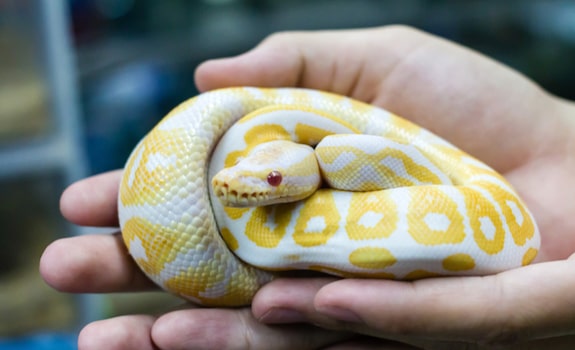
Now that you understand some important, cant-be-overlooked points about snake ownership, let’s briefly discuss what you should consider when trying to find the RIGHT breed for you!
The following considerations should help you better narrow down the list of the best snakes for beginners above if you’re still feeling indecisive.
Consideration #1: Longevity
The lifespan of a snake can vary considerably. Generally, the smaller a snake is, the shorter his lifespan will be.
On average, the smallest snakes will live to be five to ten years old. This is a nice introduction to the world of snake ownership.
You will have plenty of time to know exactly what it looks like to own and care for a snake, but you won’t need to consider who you will bequeath it to in your will. This can happen with larger snakes who can outlive their owners.
And while this would be unusual, it can happen that a snake that lives to be 20 or 30 years old may outlive its owner.
Consideration #2: Location and Laws
Along with the personal choices you need to make when deciding on the best snake for you, you also need to consider where you live and if what you are buying is legal in your area.
Some snakes are illegal nation-wide like the yellow anaconda, which is illegal everywhere in the United States. Others might be banned by a condo board or at the municipal level.
Still, other snakes might be banned because if they escape, they are destructive to the natural environment.
Even if a snake is not outright illegal, you may need a permit to own it. As such, make sure you research what you are allowed to have, or, better yet, stick to this list of commonly owned snakes.
In most of the world the “big four” most deadly snakes are not allowed to be owned anywhere. These include the:
- Russell Viper
- Saw-Scaled Viper
- Common Krait
- Indian Cobra
If you have ideas of showing how tough you are by owning one of these poisonous beasts, put that right out of your head! These are NOT pets for either beginner or expert snake owners.
If you think that the rules do not apply to you, remember that snakes are notorious escape artists. This should be considered when you factor in your location.
DON’T ignore condo board rules just because you think you have a handle on snake husbandry.
You don’t want to find yourself in a situation where you have to choose between rehoming your snakes or becoming homeless yourself.
Wrapping Up the Best Pet Snakes for Beginners
As a general rule, any snake that is easily bred and widely available is likely a good choice for a first pet. These tend to be easy-to-handle, hardy, and if purchased from a quality breeder, free of diseases.
Naturally, other factors such as where you live, how much money you have to devote to a vivarium, and whether or not you have children should also be considered. For a more demanding snake, you can see how caring for a False Water Cobra needs to look like.
As with any potential new pet, prospective snake owners should put much time and thought into how having a pet snake will affect their daily dynamic as well as that of the rest of those in their household.
By NO means is a snake a pet you can simply plop in a tank and relatively forget about!
However, as long as you put thought and planning into picking your first snake you are likely to end up with one that is just right for your circumstances.
For many people considering owning their first snake, the choice boils down to corn snakes vs. ball pythons. If you’re in the same boat, then you’ll find our in-depth comparison helpful.
Check our list of the MOST VENOMOUS snakes to see which snakes you certainly would not have in your home!
